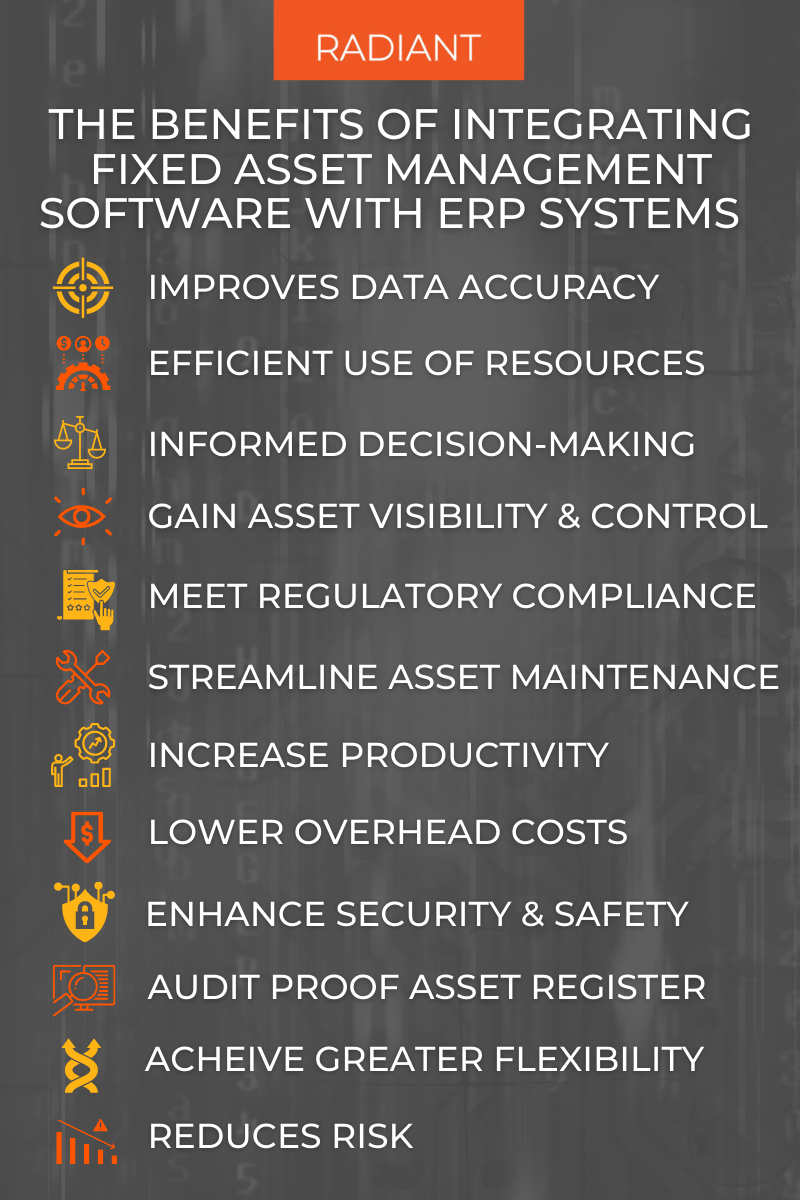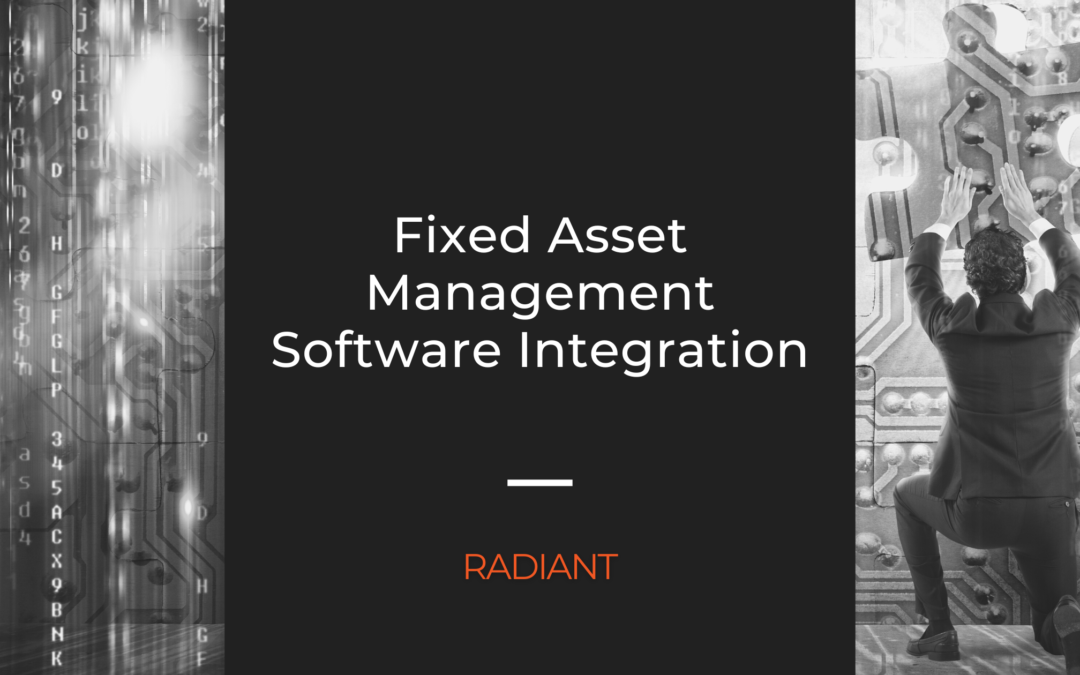A business’s success relies on its ability to properly manage its assets. However, tracking and managing all of a company’s fixed assets can be difficult, especially when done manually.
This is where asset management software comes in – it helps businesses keep track of all their critical assets, making the entire process much more efficient. While this software is definitely helpful, many businesses still find themselves struggling with integrating it into their existing systems.
In this post, we’ll explore some of the benefits of integrating fixed asset management software with existing systems and why it’s such an important step for businesses that is often overlooked.
What is Fixed Asset Management Software?

Fixed asset management software is a tool used by businesses to track and manage their fixed assets. Fixed assets are physical items that are used in the operation of a business, such as buildings, returnable containers, mobile devices, equipment, and vehicles.
Fixed asset management software helps businesses to keep track of their fixed assets and ensure that they are being used efficiently. The software can help businesses to identify which assets are underutilized or not being used at all, and it can also help businesses to track the accurate depreciation of their fixed assets.
In addition, fixed asset management software can help businesses to monitor and control their fixed costs, such as maintenance and repairs.
By using fixed asset management software, businesses can optimize the use of their fixed assets throughout the asset lifecycle and save money.
Why Should You Integrate Fixed Asset Management Software With Existing Systems?
Most businesses have some form of fixed asset management software license in place, but many struggle to get the most out of it.
One reason for this is that the asset management software is not integrated with existing enterprise resource planning (ERP) systems. As a result, asset data is often siloed and difficult to access. This can lead to inefficiencies and errors in decision-making.
Integrating fixed asset management software with existing systems can help to overcome these challenges. When data is centralized and accessible, businesses can make better use of their physical assets and make more informed decisions.
As a result, integration can lead to improved asset utilization, reduced costs, and improved decision-making. For these reasons, businesses should consider integrating fixed asset management software with their existing systems.
What Are The Benefits Of Fixed Asset Management Software Integration?
Fixed asset management software provides a number of advantages when it is integrated with existing systems, which we’ve outlined below.

– Improve Data Accuracy: One of the primary benefits of integrating fixed asset management software with ERP systems is that it can help to improve data accuracy.
When fixed asset data is stored in multiple places, it can be difficult to keep track of all of the information and ensure that it is accurate. However, when fixed asset data is integrated with ERP data, it can be easier to keep track of and ensure the accuracy of the information.
– More Efficient Use of Resources: When fixed asset management software is integrated with an ERP system, businesses can make more efficient use of their resources.
For example, businesses can avoid duplication of data entry and can track assets more accurately. Additionally, businesses can use the data from the ERP system to generate reports that can help to improve decision-making.
– Better Informed Decision-Making: Integrating fixed asset management software with existing systems can also help to improve decision-making within your organization.
When all of your data is stored in one central location, you can easily access the information that you need to make informed decisions about your high-value assets. This can help you to save time and money by making better decisions about how to allocate and use your assets
– Gain Asset Visibility & Asset Control: Integrating fixed asset management software with an ERP system can also improve visibility and control over assets.
For example, businesses can use the software to track the real-time location of assets, as well as who is using them and when they are being used. This information can be used to help prevent theft or misuse of assets.
– Streamline Asset Maintenance and Repair Processes: ERP systems provide a central repository for all enterprise data, including asset data. This means that all information related to an asset is stored in one place, making it easier to track and manage.
In addition, ERP systems typically have workflow capabilities that can be used to automate maintenance and repair processes. This can help to ensure that work is carried out in a timely and efficient manner.
As a result, integrating fixed asset management software with ERP systems can help businesses to improve their maintenance and repair processes.
– Enhance Security: Integrating fixed asset management software with existing systems can also help to enhance the security of your asset data.
When all of your data is stored in one central location, it is more difficult for unauthorized individuals to access or modify it. This can help to protect your data from theft or vandalism, as well as safeguard it against accidental deletion or corruption.
– Greater Flexibility: Another benefit of integrating fixed asset management software with existing systems is that it can provide you with greater flexibility in how you manage your assets.
When all of your data is stored in one central location, you can easily customize the way that you view and manage it. This can be helpful if you need to make changes to your asset management strategy or if you want to experiment with different ways of managing your assets.
– Increase Productivity: Integrating fixed asset management software with existing systems can also help to increase productivity. This is because employees will only need to use one user-friendly system, which can save time and increase efficiency.
Additionally, it can help to reduce errors and increase accuracy, as information will be automatically updated in all systems whenever changes are made.
– Lower Costs: Integrating fixed asset management software with existing systems can also help to lower costs. This is because it can eliminate the need to purchase and maintain separate systems for each type of asset.
Additionally, it can help to reduce the amount of time and money that is spent on training employees on how to use both systems.
– Ensure Compliance: Integrating fixed asset management systems with other ERP systems can help in meeting regulatory compliance by providing a complete and accurate picture of an organization’s fixed assets.
This information is important for complying with financial reporting requirements, such as Sarbanes-Oxley. In addition, fixed asset data can be used to support environmental, health, and safety compliance initiatives.
– Audit Proof Asset Register: By integrating fixed asset management software with your ERP system, you can minimize the risk of errors and omissions in your asset records to create an effective audit trail.
In addition, fixed assets software can help you track and manage depreciation methods for your assets. This can be helpful in audit proofing your business by providing a clear record of the value of your assets over time.
– Reduced Risk: Finally, integrating fixed asset management software with ERP systems can help to reduce risk. When businesses store their fixed asset information in multiple places, they may be at risk of losing important data if one of the storage locations fails.
However, when businesses integrate their fixed asset data with their ERP systems, they can minimize this risk by having a backup copy of the information stored in the ERP system.
In summary, by integrating fixed asset management software with existing systems, businesses can realize a number of significant benefits.
Make The Most of Your Existing Tools With Radiant’s Fixed Asset Management Software
To get the most out of your investment in fixed asset management software, it’s important to ensure that the software integrates with your existing systems.
Radiant offers a fully-integrated, cloud-based solution that can be tailored to meet the specific needs of your business. Our team is here to help you make the most of your assets and improve efficiency across your organization. Request a demo below and see how our fixed asset tracking software can work for you.
Last Updated on September 30, 2022 by Radiant

